Premium Only Content
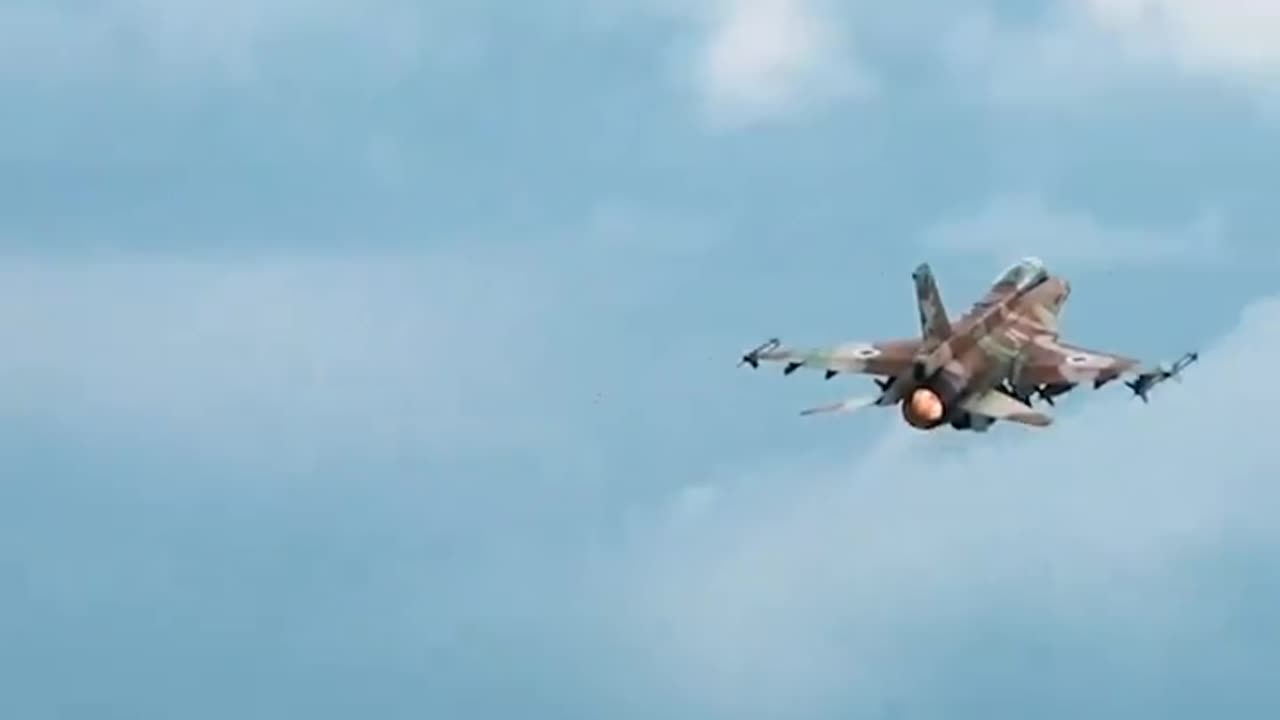
The Israeli Air Force destroyed over 1000 Hezb’Allah terrorist targets
The IAF strikes Hezb’Allah.
Muslim terrorist group that opposes the West and Israel, and seeks to create an Islamic fundamentalist state modeled on Iran
* Receives aid from Iran and Syria
* States that it “sees no legitimacy for the existence of ‘Israel’”
Hezbollah, whose name means “Party of God,” is a Lebanese organization of several thousand Shiite militants that opposes the West and Israel, and seeks to create in Lebanon a Muslim fundamentalist state modeled on Iran. Its primary mission is to destroy the state of Israel and, in the process, to murder as many Jews as possible. Describing itself as “an Islamic struggle movement,” Hezbollah condemns “the Zionist occupation of Palestine” and candidly states that it “sees no legitimacy for the existence of ‘Israel.’” As the Investigative Project on Terrorism puts it: “Hezbollah genuinely believes it has a divine mission to destroy Israel one day.”
The Hezbollah Founding Statement contains a section titled “The Necessity for the Destruction of Israel, which reads: “We see in Israel the vanguard of the United States in our Islamic world. It is the hated enemy that must be fought until the hated ones get what they deserve. … Our primary assumption in our fight against Israel states that the Zionist entity is aggressive from its inception, and built on lands wrested from their owners, at the expense of the rights of the Muslim people. Therefore our struggle will end only when this entity is obliterated. We recognize no treaty with it, no cease fire, and no peace agreements, whether separate or consolidated. We vigorously condemn all plans for negotiation with Israel, and regard all negotiators as enemies, for the reason that such negotiation is nothing but the recognition of the legitimacy of the Zionist occupation of Palestine.”
Inspired by the Iranian Revolution of Ayatollah Ruhollah Khomeini, Hezbollah was formed in 1982 with the aid of at least 1,500 Iranian Revolutionary Guards; its immediate priority was to fight the Israeli Defense Forces (IDF) that occupied Lebanon at the time, and to help spread Khomeini’s Revolution across the Muslim world. Embracing the distinctly Shiite Islamist ideology developed by Khomeini, Hezbollah gradually coalesced and grew when a number of Shiite groups — such as Islamic Jihad, the Organization of the Oppressed on Earth, and the Revolutionary Justice Organization — were assimilated into it. By 1988 Hezbollah had replaced Amal as the predominant Shiite force in Lebanon. Its base of operation is in Lebanon’s Shiite-dominated areas, including parts of Beirut, southern Lebanon, and the Bekaa Valley. Moreover, U.S. intelligence reports say that Hezbollah has set up working cells in Europe, Africa, South America, and North America.
According to the U.S. State Department, Hezbollah receives “substantial amounts of financial, training, weapons, explosives, political, diplomatic, and organizational aid from Iran and Syria.” As of 2016, Hezbollah’s annual budget was approximately $1 billion, of which 70% came from Iran. (In prior years, Iran had accounted for a higher percentage of the group’s overall revenues.) Hezbollah uses much of its money to increase the size of its already massive arsenal of surface-to-surface rockets and missiles, of which it had more than 120,000 as of May 2016, making it by far the world’s most heavily armed terrorist organization.
Hezbollah plays an important role in Lebanese politics. It won 8 new Parliamentary seats in Lebanon’s 2005 elections, giving the group a total of 23 seats in the 128-member Parliament. In addition, two Hezbollah members serve as ministers in the Lebanese government. Hezbollah also operates the Al-Manar satellite television channel and broadcast station.
Sheikh Mohammed Hussein Fadlallah, the fiery preacher of jihad, is considered to be Hezbollah’s current spiritual leader. Imad Fayez Mugniyah, who trained with Yasser Arafat’s Fatah organization in the 1970s, is Hezbollah’s key planner of worldwide terrorist operations. And the organization’s senior political leader is Hassan Nasrallah, a former military commander who studied in centers of Shiite theology in Iran and Iraq.
Between 1982 and 2005, Hezbollah was responsible for some 200 terrorist attacks that killed many hundreds of people. Among these actions were a number of kidnappings of Westerners; the 1983 suicide truck bombings in Beirut that killed 241 U.S. Marines in their barracks; the 1983 U.S. embassy bombing (also in Beirut) that killed killed 63 people, including 17 Americans; the 1983 bombing of the French multinational force headquarters that killed 58 French troops; the 1985 hijacking of TWA flight 847, in which one American passenger was murdered; the 1992 bombing of the Israeli embassy in Argentina, which killed 29; and the 1994 bombing of a Jewish community center in Argentina, which killed 95.
Hezbollah’s popularity in Lebanon received a great boost in May 2000, when Israel withdrew its troops from that country’s southern region after having maintained a continuous military presence there for 18 years. Hezbollah depicted the Israeli withdrawal as a great victory for the Muslim “resistance,” and continued to periodically shell Israeli forces in the Shebaa Farms border zone. It also continued to work against Israel by: helping terrorists and collaborators use foreign documents to gain passage through the border crossings; establishing a terrorist infrastructure inside Israel and in Judea, Samaria and the Gaza Strip; smuggling weapons and terrorists across Israel’s borders; and giving financial support to militant Palestinian organizations. Moreover, between 2000 and 2006 Hezbollah armed itself with an estimated 13,000 military rockets (with ranges of 12 to 40 miles) supplied by Syria and Iran.
Since 2003 Hezbollah has worked more closely with other Palestinian terrorist organizations such as Islamic Jihad, Hamas, the Popular Front for the Liberation of Palestine, and, especially, Tanzim. Hezbollah has also been a major supplier of weapons to Hamas.
In July 2006 Hezbollah conducted a surprise raid on a border post in northern Israel, taking two Israeli soldiers captive. The abductions prompted an Israeli military campaign against Lebanon, to which Hezbollah responded by firing hundreds of rockets across the Lebanese border and into heavily populated Israeli cities. It launched these rockets from civilian areas in Lebanon, making it impossible for Israel to retaliate without causing civilian casualties, which Hezbollah then exploited for propaganda purposes. On July 14, 2006, Hezbollah struck an Israeli Saar 5-class missile ship and an Egyptian-crewed cargo ship with highly sophisticated C-802 anti-ship missiles. Manufactured in China, these missiles need highly trained operators to crew them — a function that most likely was performed by Iranian Revolutionary Guard troops. The fighting continued for a month, during which Israel targeted many Hezbollah strongholds, and Hezbollah launched more than 4,000 rockets into Israeli cities, killing 43 people and injuring thousands.
On December 10, 2006, hundreds of thousands of Hezbollah members and their Shiite allies rallied to demand that Lebanese Prime Minister Fuad Saniora, a Sunni, establish a “national unity government” wherein Hezbollah would be allotted one-third of all Cabinet posts. Hezbollah deputy leader Sheik Naim Kassem declared that his side was willing to stage street protests for months to achieve its goal. “Does Bush want popular expression in Lebanon?” Kassem thundered to the crowd. “Do the West and the Arabs want to hear the voice of the people in Lebanon? Tell them ‘Death to America!’ Tell them ‘Death to Israel!’”
In May 2007 Kassem stated that all of his organization’s policies and activities are coordinated with, and ultimately controlled by, Iranian leadership. “Even when it comes to firing rockets on Israeli civilians, when they [Israel] bombed the civilians on our side, even that decision requires an in-principle permission from [the ruling jurisprudent],” Kassem said in reference to Supreme Iranian Ayatollah Ali Khamenei. “Hezbollah relied and relies still in its Islamic religious position, which has to do with its activity in general and its jihadist activity in particular, on the decision of [Khamenei]. The ruling jurisprudent is the one who allows and the one who prohibits.”
Also in May 2007, it was reported that Hezbollah had set up a training facility in a relatively secluded area on the Paraguay-Argentina-Brazil border, in preparation for attacks against the United States.
In July 2007, Hezbollah leader Sheik Hassan Nasrallah said — in an interview aired by Al-Jazeera and Al-Manar television — that his group possessed an arsenal of rockets capable of reaching “any corner and any point in occupied Palestine” (i.e., Israel), including Tel Aviv.
At a nine-nation security conference held in Jerusalem in May 2008, U.S. Homeland Security Secretary Michael Chertoff said that Hezbollah — “in terms of capabilities, in terms of range of weapons they have, in terms of internal discipline” — makes al Qaeda look like “a minor league team.” Israeli analysts agreed that Hezbollah was the top terrorist organization in the world. According to Dr. Walid Phares, director of the Future Terrorism Project at the Washington-based Foundation for the Defense of Democracies, Hezbollah leader Hassan Nasrallah had “basically defeated” American efforts to build democracy in Lebanon. “His model will be used [by Hamas] in Gaza,” said Phares.
in 2009, Hezbollah joined the Lebanese government and won virtual veto power over all its decisions. Hezbollah brought down that government on January 12, 2011, after Prime Minister Saad Hariri refused to obey the group’s demand that he stop cooperating with a United Nations-backed tribunal investigating the 2005 assassination of his father, former Prime Minister Rafik Hariri.
In response to Hariri’s refusal, Hezbollah and its allies resigned from the Cabinet, thereby forcing the government’s collapse. Both sides then began scrambling to secure the support of at least 65 lawmakers, the number needed to form a government in Lebanon’s 128-seat Parliament. On January 24, Hezbollah succeeded in securing that support. This set the stage for the group to name its own candidate, billionaire businessman Najib Mikati, as the nation’s next prime minister.
In August 2011, Walid Sakariya — a Hezbollah member of Lebanon’s parliament — predicted that Israel would be destroyed by a “Shiite crescent” in a war with hundreds of thousands of deaths. This war, he said, could commence after two things happened: (a) Iraq was absorbed into Iran’s bloc after a U.S. troop withdrawal from Iraq, and (b) the Syrian regime managed to put down the popular uprising against it. Those prerequisites, Sakariya explained, would enable the formation of an Iranian-Syrian-Hezbollah axis capable of mobilizing more than 100 million people in a war against Israel.
In September 2011, the Italian daily Corriere della Sera reported that Hezbollah is setting up a base of operations in Cuba in order to extend its ability to reach Israeli targets in Latin America. According to the Tel Aviv daily Yedioth Ahronoth, three Hezbollah members had already arrived in Cuba to set up the base, which was to “include 23 operatives, hand-picked by Talal Hamia, a senior member tasked with heading the covert operation.” Hezbollah referred to the project as “The Caribbean Case.”
On May 9, 2013 — a week after Israel had bombed Iranian missiles that were sent to Syria for delivery to Hezbollah — Hezbollah supreme leader Hassan Nasrallah boasted that the Syrian regime of Bashar al-Assad would ship “game-changing” weapons to the terrorist organization.
-
 LIVE
LIVE
SynthTrax & DJ Cheezus Livestreams
13 hours agoFriday Night Synthwave 80s 90s Electronica and more DJ MIX Livestream Variety Visuals / Variety Tracks Edition
311 watching -
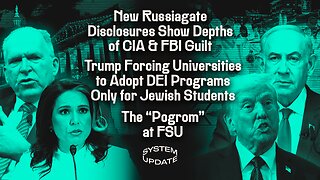 1:46:59
1:46:59
Glenn Greenwald
7 hours agoNew Russiagate Disclosures Show Depths of CIA & FBI Guilt; Trump Forcing Universities to Adopt DEI Programs Only for Jewish Students; The "Pogrom" at FSU | SYSTEM UPDATE #496
65.1K48 -
 LIVE
LIVE
FusedAegisTV
22 hours agoOFFICIAL Evo 2025 Day 1 Co-Stream - Las Vegas, NV ∥ 17 TOURNAMENTS!!
285 watching -
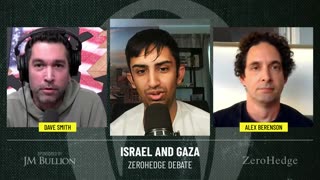 2:10:07
2:10:07
The Illusion of Consensus
3 hours agoDEBATE: Alex Berenson vs Dave Smith on Holocaust, Israel/Gaza
31.5K8 -
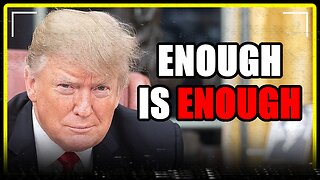 8:07
8:07
MattMorseTV
1 day ago $10.77 earnedTrump just LOWERED PRICES by 75 PERCENT.
62.8K102 -
 51:41
51:41
BonginoReport
11 hours agoParalyzed Woman Blames COVID-19 Jab, Sues Moderna! - Nightly Scroll w/ Hayley Caronia (Ep.103)
121K86 -
 2:08:34
2:08:34
Mally_Mouse
1 day agoFriend Friday!! - Let's Play! - Minecraft
8.21K -
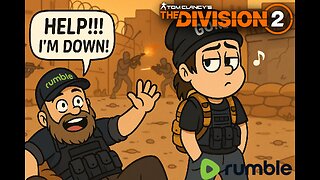 LIVE
LIVE
Gore TV
2 hours ago💀 STAY DOWN, BRO 🤣 | Vapingamers Needs a Rez… Again 😏
28 watching -
 LIVE
LIVE
AirCondaTv Gaming
4 hours ago $0.09 earnedGolf with Your Friends & Empyrion - These Ball Touches Are Out Of This World (Collab)
26 watching -
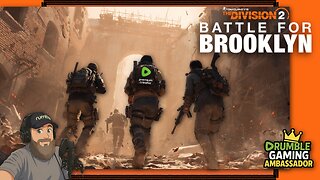 LIVE
LIVE
VapinGamers
2 hours ago $0.07 earnedCommunity Co-Stream Division 2 with GoreTV and BookPrince! - !music !rumbot
16 watching